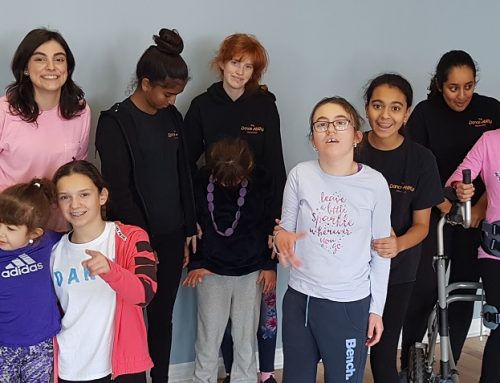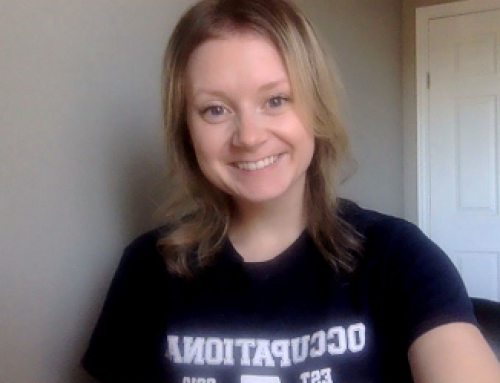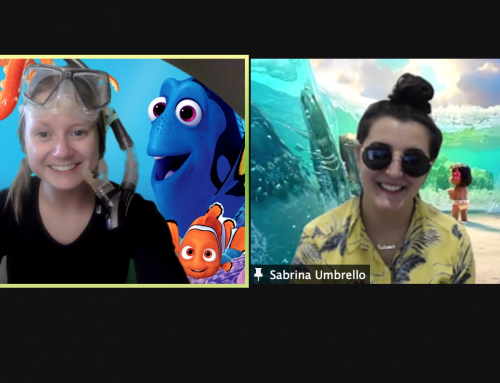The Dance Ability Movement is a community made up of dancers, volunteers, teachers and occupational therapists who are involved in classes together to share in the joy of dance and let their inner dancer shine.
However, all of this is only possible because of the families that surround our dancers. Parents, siblings, and caregivers who know and love their dancer and support them each and every day to be who they are! We truly believe that families are at the heart of our community, keeping the pulse of all that we do.
When a new dancer is interested in joining a class, we strive to provide a welcoming and supportive environment that recognizes the unique strengths and dreams of each person. This takes coordination and thoughtful planning behind the scenes from our team in addition to providing a detailed ‘intake’ process where we dedicate time from an occupational therapist to really get to know the dancer, their family, and what they hope to get out of the program.
OTs are experts on enabling others to do the things they want to do – and in our case, this means enabling opportunities to dance. There are often barriers to participating in a dance class for people with different needs and abilities which exist within the environment (e.g., attitudes, perceptions, ways of teaching) rather than the individual. The design of our program is created using universal design strategies, cultivating a culture that celebrates differences and learning from one another.
For a new dancer, the OT may be the expert in enabling their participation in dance, but it is the families who are the experts on everything about that dancer. Therefore, the most important thing our therapists can do is to facilitate a collaborative relationship with parents where families recognize their capacity in supporting their child and are seen as equally valued members of our team and community.
“Participation” looks different for everyone. Even if an adapted class is set up and a dancer starts to attend – it is impossible to know whether the class is meaningful for the dancer unless we can understand what involvement looks like for them. For example, it might be most important that the dancer has an opportunity to share their interests with the class, and connect with others – and so a class focused only on imitating the teacher and following structured movements to music chosen by the teacher might not be very meaningful for them. For them, it might be about being part of a group where they can share the music they like, and be invited to express their own interests through creative movement and sharing activities. (I’m reminded of one dancer who lived for the “Octopus hat” during freestyle! For many dancers, having the chance to dress up, and show off their moves – THAT’s dancing!).
On the other hand, there may be dancers who have seen dance shows on TV, or for someone who is keen to pursue teaching or performing arts, it might be more important that they have an opportunity to be challenged to learn choreography, receive corrections, and work on learning elements of dance that will serve them in other areas – perhaps supporting them to volunteer with other classes and take on leadership roles within the group. (Whereas other dancers will freeze if they’re in the spotlight!).
This information that can be gathered from the dancer and family before classes, helps the OT to formulate unique ideas about what participation for THAT dancer could look like. Together, with the family and dancer the OT strives to facilitate a vision for “possibilities” in dance.
Parents provide valuable insight into their child’s interests, motivations, and strengths. Parents also support their dancers to communicate and express what they want – guiding our team of volunteers in learning about how to be attentive listeners, strategies for communication, and ways to invite them to share their ideas. Many times, parents may not even realize HOW much they have to offer. And that is where it’s an intricate “dance” between the parent and therapist to recognize the knowledge they both have and finding ways to bring their unique perspectives together to support the dancer.
Also – when a family feels they don’t have the answers – it’s still very important and valuable information which can guide the OT to focus on using their observational skills to help explore potential ‘answers’ to the questions (i.e., What does the dancer enjoy? How do they express themselves? How do they feel about dancing?).
Parents have spent YEARS with their dancer, every single day – they have TONS of experience and knowledge to draw on. It’s so important to recognize this, and use this experience to support a dancer before their first class – rather than having a team of new faces start from ‘scratch’ with getting to know a dancer (and to make the experience meaningful for them as I mentioned before!). This is important for ANY dancer, because we all have different hopes and dreams which deserve to be recognized. We also all learn in different ways – and in order for us to feel like we belong – we need to be truly seen for who we are!
The collaborative intake process and having information ahead of time is especially important for creating safe spaces where everyone can participate on their own terms. It is especially valuable when a dancer may have emotional needs, and are particularly nervous or hesitant about joining a group, or are overwhelmed in new situations. Understanding equipment a dancer may use, or tools they have to help them participate and why is something our OTs will learn from parents and translate to the team of teachers and volunteers as needed. The OTs know which questions to ask – but it’s the families who are the keys to success! (hence it is an ongoing dance, or sharing information and ideas, between the team!)
At The Dance Ability Movement, we strive to make families feel welcome and comfortable with sharing successes, challenges and everything in between throughout their child’s dance journey! We have managed to pivot during the recent pandemic, focusing on the importance of staying connected and keeping movement and music in our dancers’ lives (as well as maintaining a roof over our head) because of the support of our families.
So, the secret is out! If you want to know how to best support a dancer who may have ‘different needs’ – ask the experts (their parents!). Invite them onto your team and ensure their voice is heard.
Mallory Ryan, Director of Quality & Development






